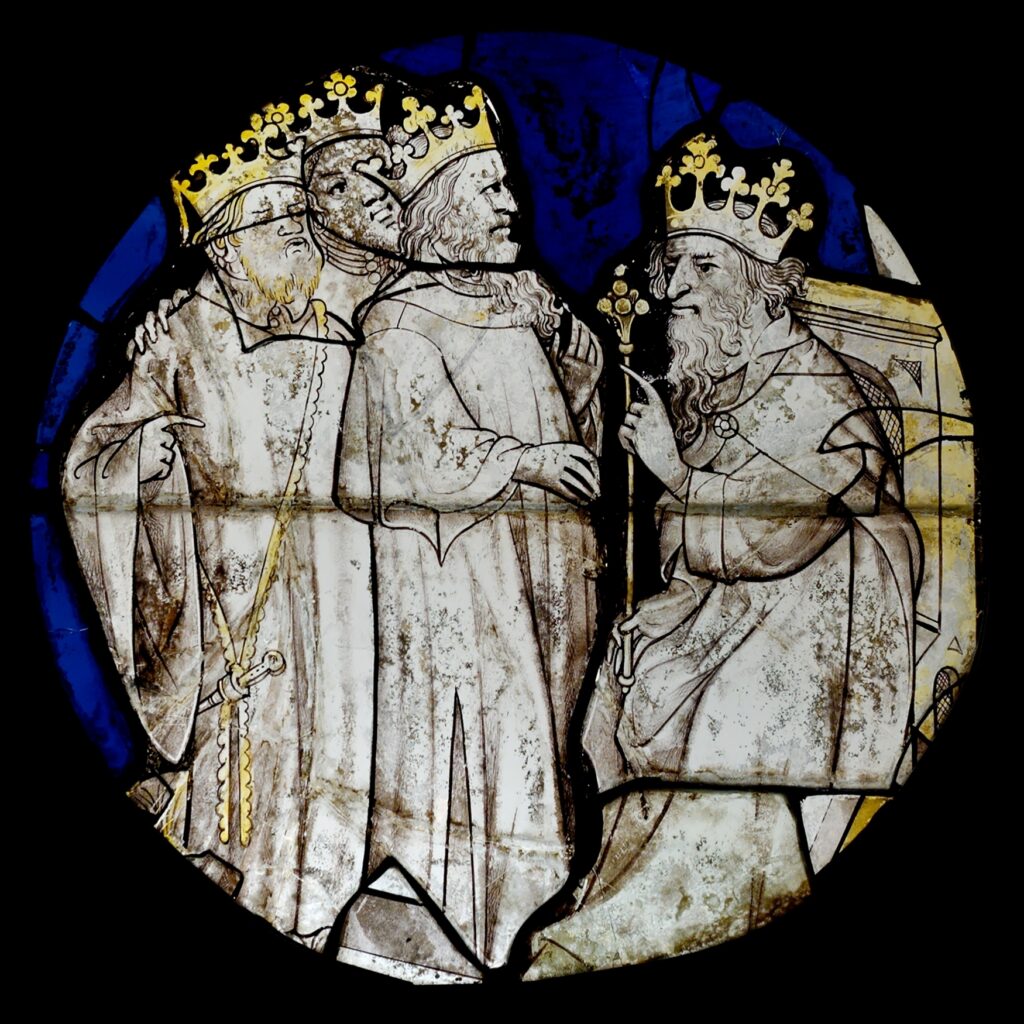The fifth cantata of the Christmas Oratorio opens with a fabulous choir brimming with energy and activity. Scholars are divided on whether this number is original or parodied. In any case, we have no other version of this music and no other context to which to refer it.
The instrumentation for this movement includes oboes d’amore, strings and basso continuo, and a 4-part choir. The text is of praise, thanks and acclamation. It’s not directly related to the narrative, but is it possible that the basso continuo, with its constant eighth notes, hints at the long and tireless pilgrimage of the Magi to see the Child?
The first scene of the cantata opens with the evangelist enunciating text from Matthew (2: 1-2), which describes the arrival of the Wise Men from the East into Jerusalem. The choir takes on the role of the Kings, who ask where the King of the Jews is. The contralto answers the question with an interpolation recited in Mary’s voice, inserted by the librettist. Then the Kings, again with text from the Gospel, declare having seen the star in the east. The rest of the contralto recitative elaborates on the concept of light, and leads to a chorale in which the choir no longer represents the Kings but sings on behalf of the congregation.
A bass aria with solo oboe d’amore follows, which elaborates on the theme of light with word-painting details on “hellste Kerze” (“the brightest candle”).
The story continues with the mention of King Herod, hearing about Jesus and feeling fear, expressed by Bach with the high note of the tenor phrase. The contralto intervenes with a recitative accompanied by the strings, questioning fear and encouraging to change fear into joy. The evangelist takes over with three additional verses from the gospel that describe Herod’s actions to ascertain the Child’s whereabouts. When the text quotes the words of the prophets, the recitative turns into an “arioso”.
A trio for soprano, alto and tenor follows, accompanied by solo violin and continuo with a very interesting structure. The soprano and the tenor represent two believers asking for salvation and invoking the presence of Jesus. Meanwhile, the contralto (Mary?), articulating the third line of the text in syncopated rhythm, prompts them to be silent (“schweigt”), establishing that the savior has already arrived.
The contralto delivers a final recitative, and a chorale for four voices closes the cantata, both movements painting images on the heart of the believer who receives Jesus.
